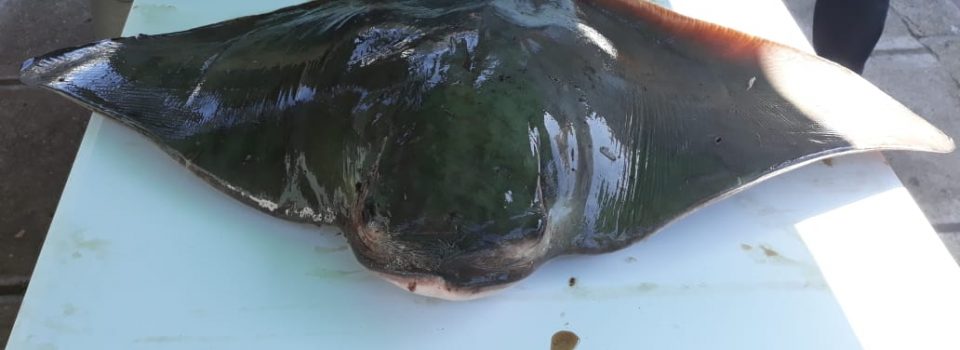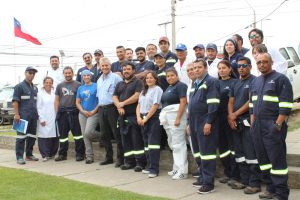Sharks ,stingray and chimaeras course offered by IFOP
February 7th, 2019Between January 29th and 31st, in San Antonio, Valparaíso’s region, III Biology and Anatomy of Chondrichthyes Workshop was held, offered under Monitoring of Highly Migratory Resources – Ecosystemic Approach’s project, the monitors of the activity are Dr. Patricia Zárate and Valparaíso University professor, Francisco Concha.This workshop main objective is to strengthen knowledge of approximately 25 IFOP scientific observers in biology, anatomy and sharks sampling , stingrays and chimaeras.
Dr. Patricia Zárate referred to the course “This activity is a training to scientific observers in regard to Chondrichthyes, a group of marine animals that is made up of sharks, stingrays and chimaeras. In this workshop we offer theoretical classes in which we deal with issues related to these organisms ecological role in marine ecosystem, current conservation state of these species in Chile and in other parts of the world, their fisheries situation and relevant biological aspects. In the practical sessions we deal with a wide variety of animals, from those that live in deep waters to those that live on sea surface, and we focus on their form and on different body systems such as reproductive, digestive, circulatory and respiratory .
IFOP scientific observers participate in the activity, they have the important role of collecting fisheries biological information from fisheries in Chile both aboard fishing vessels and at docks throughout the country. They are in charge of identifying, measuring and taking samples of all captured species, this information is fundamental for IFOP developed projects In the course there are 25 scientific observers who carry out this work in pelagic and demersal fisheries that take place between Arica and Lebu.
Juan Carlos Guerrero, scientific observer narrated “the course focuses basically on recognizing the digestive, reproductive and circulatory systems of chondrichthyes, this is in charge of Dr. Patricia Zárate. Today we were studying the stomach content of a tile and we found a mackerel, in other species we found cod, squid, sharks species are very varied since we have a very long coast in our country. Finally, I want to highlight the quality of this course since it serves us a lot and gives us more and better information about the studied species”.
Daniel Fuenzalida, scientific observer explained ” this workshop’s objective is to unify criteria with all IFOP’s scientific observers, throughout the country, here we learn both chondrichthyans internal and external anatomy, and we improve our knowledge to be able to identify different species, this is a fun workshop because we have different species and that allows us to work and learn a lot. “
Francisco Concha, Universidad de Valparaíso’s professor, mentioned “we are participating in a chondrichthyan training to refresh their knowledge of internal and external anatomy, here they learn to identify deep species, other pelagic, using some keys that exist In literature, they were reinforced which keys or important characters to be able to identify species, such as in which fins to fix, what measurements to do, what happens with the teeth, what happens with proportions, in internal anatomy we see maturity states, stomach contents, and in the reproductive part if females are gestating.
Patricia Zárate, concluded “the importance of studying chondrichthyans is that they have a very important ecological role in the sea, they are top predators, that is, they are at the top of the trophic chain and have few predators, they regulate the populations of their prey that are in the ecosystem. The removal of these top predators has shown around the world that it can be catastrophic in some environments, since they indirectly affect the species that are found in the lower trophic levels, which are often of commercial interest “


